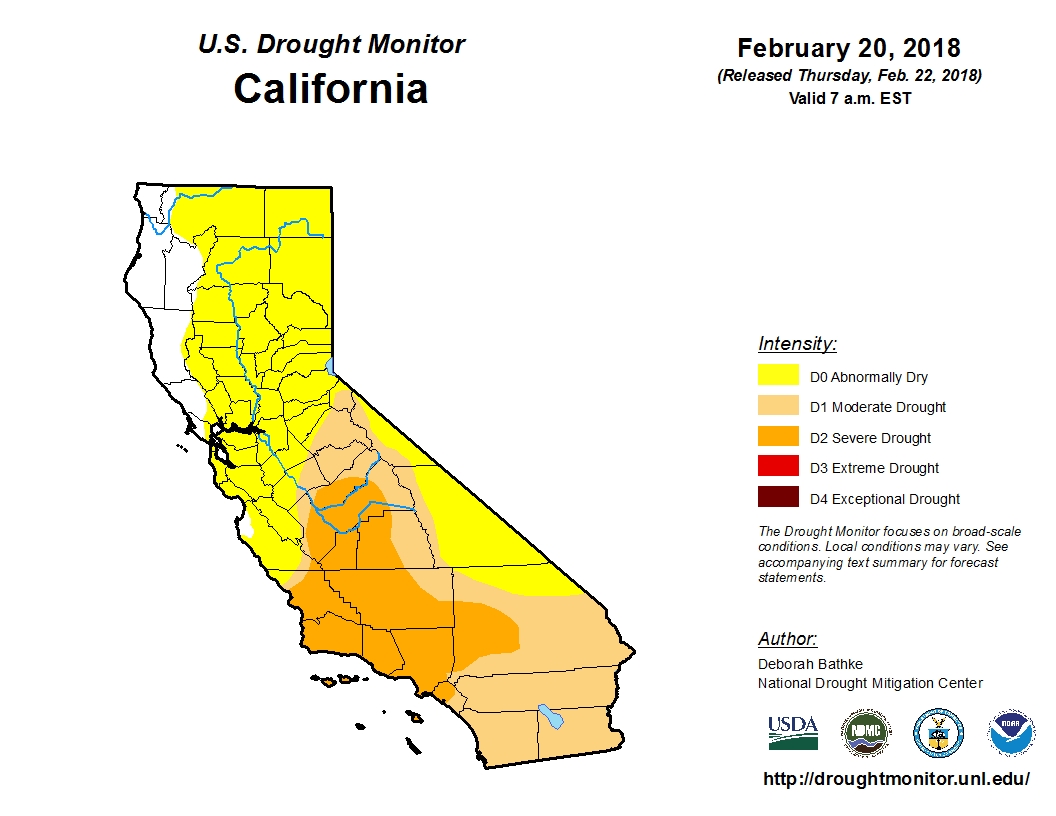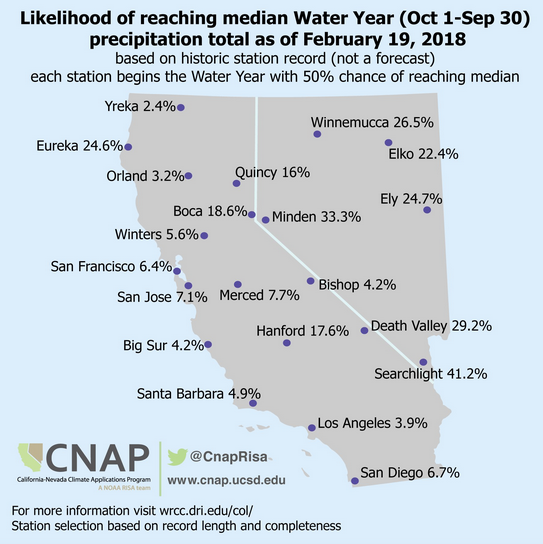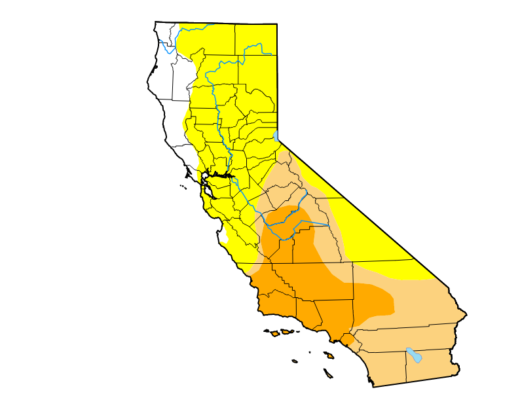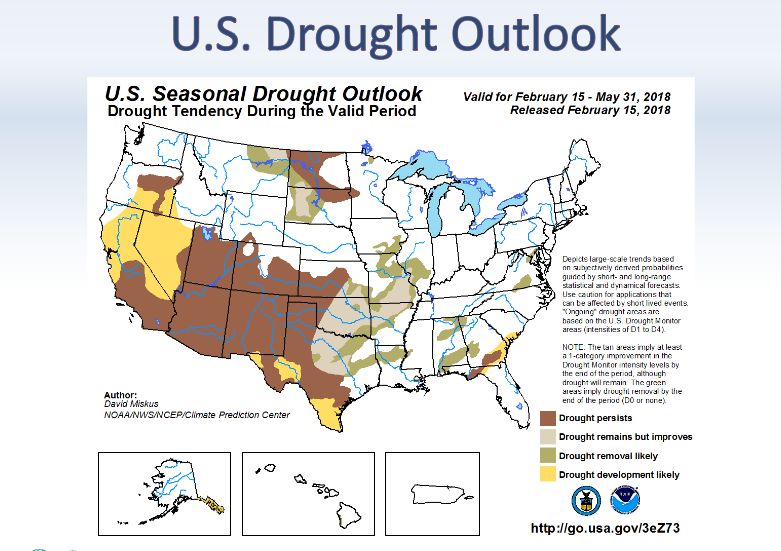After an all-too-brief reprieve, the Golden State is once again starting to brown up — at least on government drought maps.
The U.S. Drought Monitor now has nearly 48 percent of the state categorized as being in at least “moderate drought.” More than 91 percent of the state is listed as at least “abnormally dry,” the precursor stage to drought.

The term “drought,” is of course, highly subjective and has different meanings to different people. But the gradually returning shades of yellow and brown to the widely cited map are unnerving to many, with the state’s most punishing drought on record so fresh in California’s collective memory.

The stage is certainly being set for some sort of drought. This week as the State Water Resources Control Board considered permanent statewide restrictions on a list of wasteful water uses, members were told that, measured by a key collection of gauges in the northern Sierra Nevada, the December-through-February period has been California’s third driest on record (exceeded only by 1977 and 1991, when a “March Miracle” saved the wet season). In the central Sierra, this December through February was measured as the driest on record.
Those three months typically provide the state with half of its total annual precipitation.


